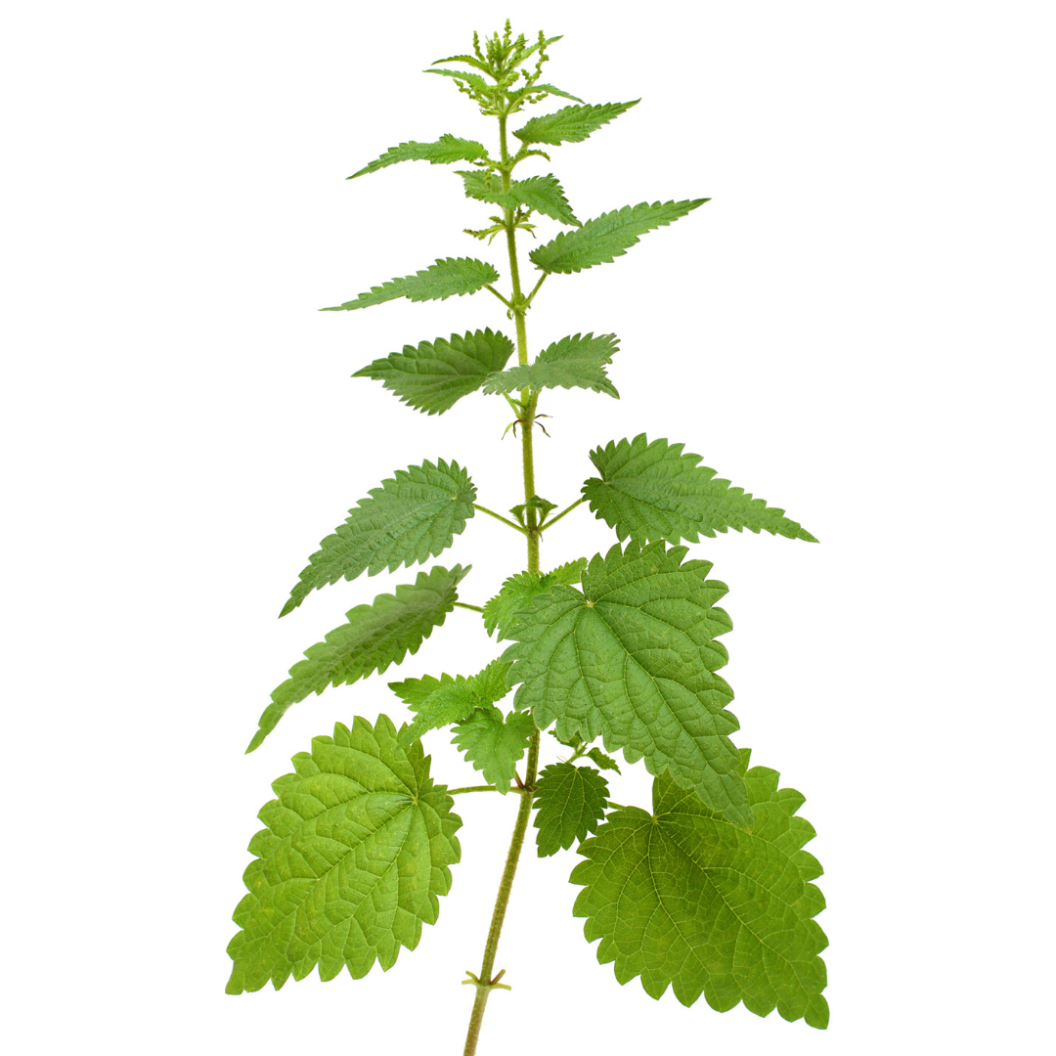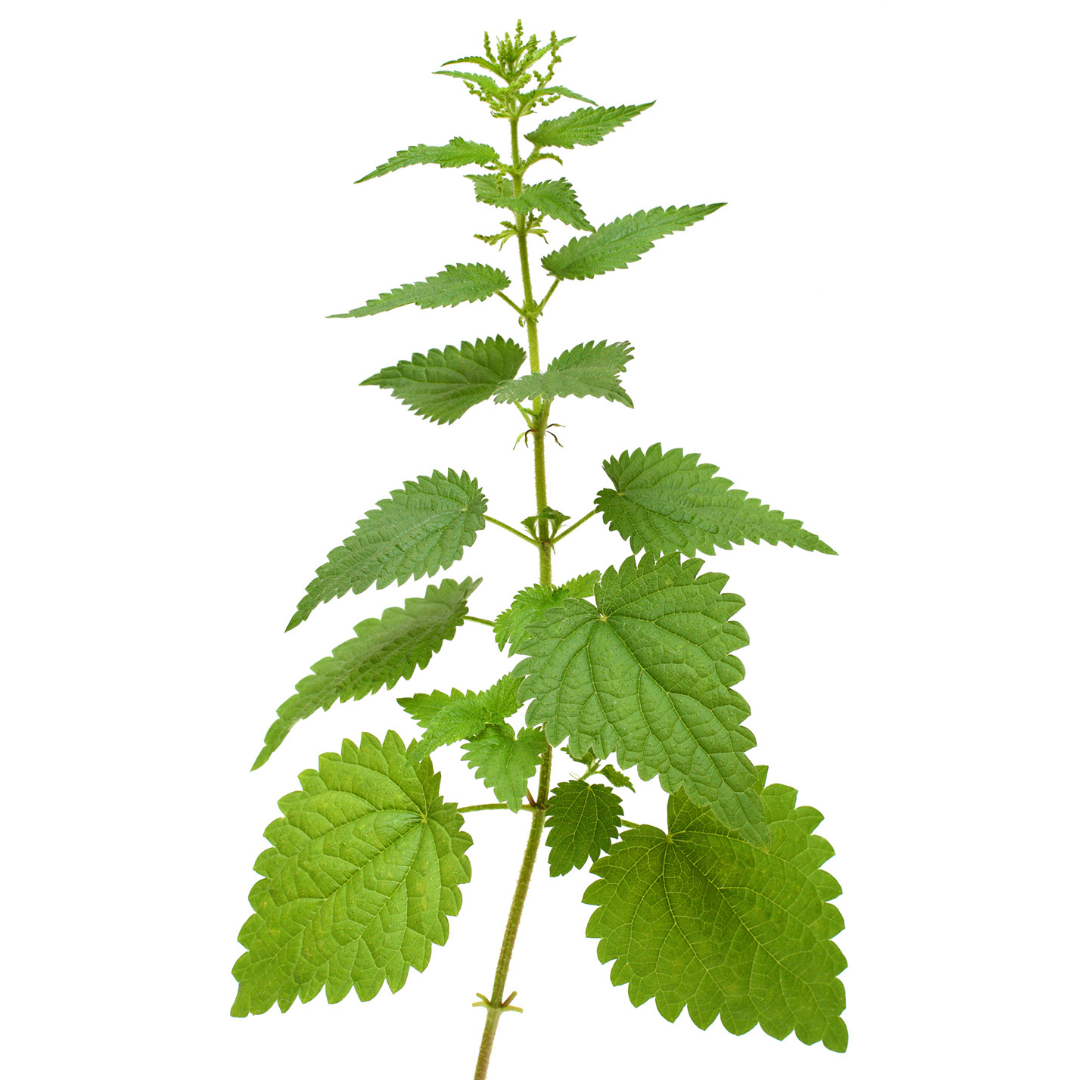
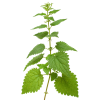



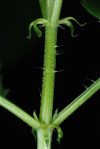
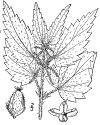
Stinging Nettle
DESCRIPTION: Stinging nettle is a wild plant that can be found in many parts of the world. It has long, pointy leaves with tiny hairs that can sting you if you touch them. The plant can grow up to several feet tall and is often found in areas with moist soil like meadows, forests, or along riverbanks. Despite its stinging properties, stinging nettle has been used for medicinal and culinary purposes for centuries. Some people even believe that it has healing properties and can help with conditions like arthritis, allergies, or urinary tract infections. So, while it may be a bit prickly to the touch, stinging nettle has a long history of being useful and beneficial to humans.
SCIENTIFIC NAME: Urtica dioica
OTHER NAMES: Nettle, Common Nettle, Tall Nettle, Burn Nettle, Nettle Leaf, Ortie, Grande Ortie, Brennessel, Brandnetel, Urtiga
LEAF TYPE: Broadleaf
FLOWERS: The flowers of stinging nettle are small and not very showy. They grow in clusters or groups on long, slender stems that emerge from the leaf axils, which are the points where the leaves attach to the stem. The flowers are usually green or yellowish in color and have no petals, but rather tiny, inconspicuous sepals that are barely noticeable.
LEAVES: The leaves of stinging nettle are long, pointed, and have a serrated edge, which means they look like they have jagged teeth along the edges. They can grow to be several inches long and have a rough texture due to the tiny, stinging hairs that cover them. These hairs can irritate the skin and cause a stinging or itching sensation if you touch them, which is how the plant gets its common name. The leaves are usually green in color and have a slightly heart-shaped base where they attach to the stem. Despite their prickly nature, stinging nettle leaves are often used for medicinal and culinary purposes and can be cooked or dried and brewed into teas or infusions.
LIFE CYCLE: Perennial
HOW TO IDENTIFY: Stinging nettle can be identified by its long, pointed leaves that have a serrated edge and are covered in tiny, stinging hairs. The plant can grow to be several feet tall and has a slightly bushy appearance. It usually grows in areas with moist soil like meadows, forests, or along riverbanks, and is often found in large patches or clumps. When the plant is touched, the tiny hairs on the leaves can cause a stinging or itching sensation, so it's important to wear gloves or handle it carefully. In the spring and summer, stinging nettle also produces small green or yellowish flowers that grow in clusters on long stems that emerge from the leaf axils. While stinging nettle may look similar to other plants with pointed, serrated leaves, the tiny stinging hairs are a distinctive characteristic that can help identify it.
MECHANICAL CONTROL RECOMMENDATIONS:
1. Hand pulling - More Info
2. Mowing or Cutting - More Info
3. Smothering - More Info
4. Tilling - More Info
5. Grazing - More Info
6. Cut and Cover - More Info
7. Repeating Cutting - More Info
8. Scalding - More Info
9. Mechanical Removal Tools - More Info
CHEMISTRY RECOMMENDATIONS:
"Pre-emergent herbicides:
Glyphosate: Glyphosate-based herbicides are broad-spectrum and can have some effect on stinging nettle. However, they are non-selective and can harm desirable plants as well.
Trifluralin: Trifluralin is a pre-emergent herbicide used to control annual grasses and some broadleaf weeds. It might have limited effectiveness against stinging nettle.
Oryzalin: Oryzalin is another pre-emergent herbicide used against annual grasses and certain broadleaf weeds. Its effectiveness on stinging nettle is uncertain.
Isoxaben: Isoxaben is a pre-emergent herbicide that targets broadleaf weeds. While it's effective against some perennial broadleaf weeds, its impact on stinging nettle might be limited.
Pendimethalin: Pendimethalin is often used to control annual grasses and certain broadleaf weeds. Its effectiveness on stinging nettle may vary.
Post-emergent herbicides:
2,4-D: 2,4-D is a selective herbicide that targets broadleaf weeds and is commonly used to control stinging nettle. It's effective against many broadleaf plants while being less harmful to grasses.
Dicamba: Dicamba is another selective herbicide used to control broadleaf weeds, including stinging nettle. It's often used in combination with other herbicides for enhanced control.
Triclopyr: Triclopyr is effective against a wide range of broadleaf plants, making it useful for controlling stinging nettle. It's often used in formulations specifically designed for woody plants and brush control.
Glyphosate: Glyphosate-based herbicides can be effective for non-selective control of stinging nettle. However, since they can harm desirable plants as well, caution is needed when using glyphosate in areas with other vegetation.
Metsulfuron-methyl: This herbicide is effective against a variety of broadleaf weeds, including stinging nettle. It's often used in combination with other herbicides or adjuvants.
Clopyralid: Clopyralid targets certain broadleaf weeds and can be used to control stinging nettle. It's often found in combination products.
Fluroxypyr: Fluroxypyr is a broadleaf herbicide that can be effective against stinging nettle. It's often used to control a range of woody and herbaceous weeds.
Aminopyralid: Aminopyralid is used to control a variety of broadleaf weeds, including some perennials. It's often used in combination with other herbicides.
Carfentrazone-ethyl: Carfentrazone-ethyl is a herbicide effective against many broadleaf weeds, including stinging nettle. It's often used in combination with other products.
Selective herbicides:
2,4-D: 2,4-D is a widely used selective herbicide that targets broadleaf weeds, including stinging nettle. It's commonly used in lawns, pastures, and non-crop areas.
Dicamba: Dicamba is another selective herbicide effective against many broadleaf weeds, including stinging nettle. It's often used in combination with other herbicides.
Triclopyr: Triclopyr is effective against a range of broadleaf weeds, including woody plants like stinging nettle. It's commonly used for brush and weed control in non-crop areas.
Clopyralid: Clopyralid targets certain broadleaf weeds and is used for controlling weeds like stinging nettle. It's often found in combination products.
Fluroxypyr: Fluroxypyr is a broadleaf herbicide effective against stinging nettle and other broadleaf weeds. It's used in various settings, including lawns and non-crop areas.
Aminopyralid: Aminopyralid is used to control a range of broadleaf weeds, including some perennials like stinging nettle. It's often used in combination with other herbicides.
Metsulfuron-methyl: While it's not as selective as the others on this list, metsulfuron-methyl can be used selectively in certain situations to control stinging nettle and other broadleaf weeds.
Carfentrazone-ethyl: Carfentrazone-ethyl is used for controlling a variety of broadleaf weeds, including stinging nettle. It's often used in combination with other products.
Non-Selective herbicides:
Glyphosate: Glyphosate-based herbicides are one of the most commonly used non-selective options. They are effective against a wide variety of plants, including stinging nettle. However, be careful when using glyphosate in areas with desirable plants, as it will kill any vegetation it comes into contact with.
Glufosinate: Glufosinate-ammonium is another non-selective herbicide that's effective against many weeds, including stinging nettle. Like glyphosate, it's important to avoid contact with desirable plants.
Diquat: Diquat is a fast-acting non-selective herbicide. It's contact-based and causes rapid desiccation of plants. While it's effective, it may not provide as long-lasting control as some other herbicides.
Paraquat: Paraquat is another non-selective herbicide that acts quickly to desiccate and kill plants. It's toxic to humans and should be handled with extreme care.
Imazapyr: Imazapyr is a non-selective herbicide effective against a wide range of plants, including some woody species. It can be used for spot treatments.
Pelargonic Acid: This is a natural, non-selective herbicide derived from fatty acids. It causes rapid dehydration of plant tissues upon contact.
Recommended Prevention
Recommended Control

